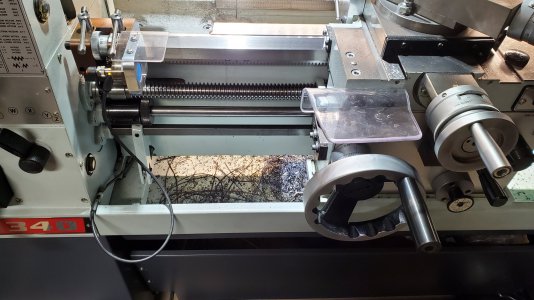- Joined
- May 7, 2020
- Messages
- 267
Now that some much needed shop organization was done I got around to installing our rotary phase converter. Picked up a lathe a few months ago from an estate sale. What was supposed to be 5 hp turned out to be 7.5hp dual speed. VFD was pretty much out and unfortunately the price break between American Rotary's 10hp and 15hp was a lot. Decided to spend just a little more and get their ADX-20 to future proof a bit.
I thought it was a very easy install after reading the manual twice and watching some YouTube.
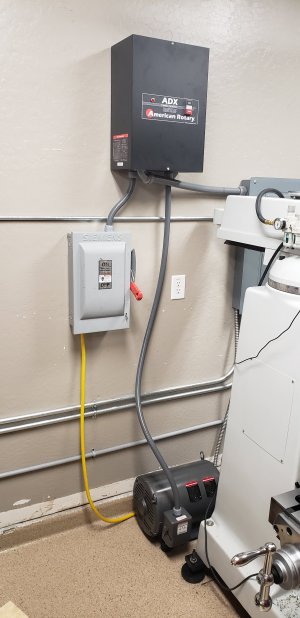
With only one 3-phase machine right now I just picked up a fused 3-phase switch on Ebay. If we get more tools and a load center I'd still want the switch so we don't accidentally start the RPC under load.
We'll be installing some kind of chip shielding before someone asks about that. Expecting a glut of post Covid plexiglass any day now.
Now that we have 3-phase we needed to plan out how to get power to the lathe. We need the ability to roll our shop's gantry crane out of the garage and onto the driveway in order to offload our trailer. Our primary use case is 4x8 plate steel for the CNC plasma. But we also wanted to maximize floorspace vs putting all the tools on the perimeter of the shop to make room for the crane.
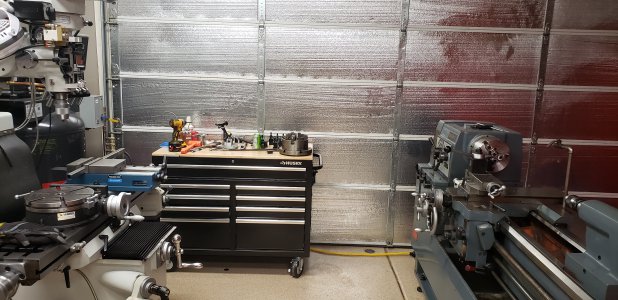
We needed a way to disconnect and move the power source so the gantry could roll out the door. No way to run permanent conduit on the floor and can't run overhead because of the garage door.
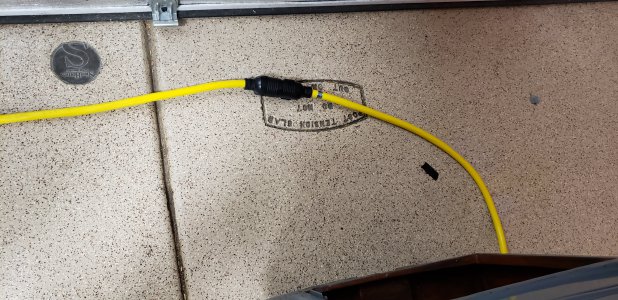
Picked up a really burley L14-30 extension cord for RV's. Has a NEMA locking connection. We cut it in half and wired each end into the switch and lathe. Now it's easy to disconnect and I get to put the lathe where I want it. Concerns about code aside, this will work really well for us.
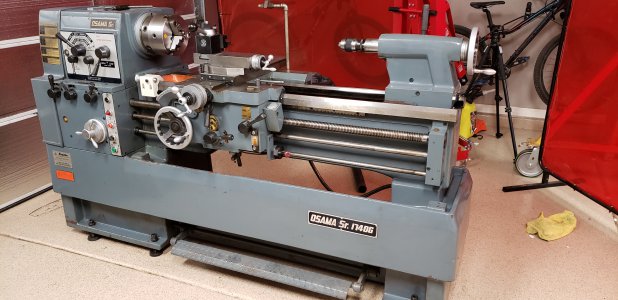
Got everything wired. Motor turns the right direction. The lathe is alive!
Thoughts on the American Rotary RPC?
Easy install. Custom Baldor generator that runs really quiet. My kid turned it on then asked when it starts to spin. Couldn't believe a piece of machinery that big could be so quiet. If the stats are to be believed, this thing makes really clean 3-phase power. Will run everything from a CNC machine to an air compressor. Seems like a nice piece of kit.
Oh, one other detail. If you need to strip 6 gauge wire pick up one of these if you don't already have an extra large size stripper:
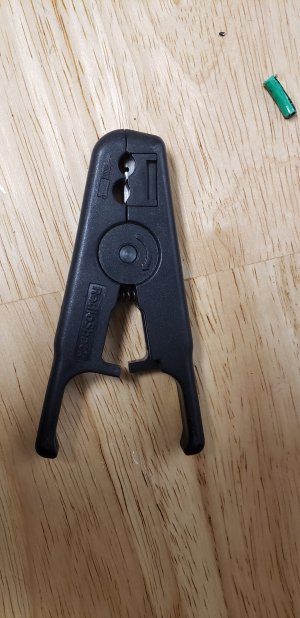
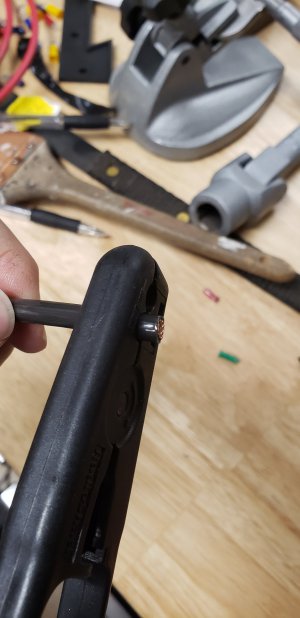
This is a coax cable stripper. Coax is the same size as 6 gauge. It's handy for coax too. You just attach and spin...the blade cuts the insulation perfectly every time. Super simple.
I thought it was a very easy install after reading the manual twice and watching some YouTube.

With only one 3-phase machine right now I just picked up a fused 3-phase switch on Ebay. If we get more tools and a load center I'd still want the switch so we don't accidentally start the RPC under load.
We'll be installing some kind of chip shielding before someone asks about that. Expecting a glut of post Covid plexiglass any day now.
Now that we have 3-phase we needed to plan out how to get power to the lathe. We need the ability to roll our shop's gantry crane out of the garage and onto the driveway in order to offload our trailer. Our primary use case is 4x8 plate steel for the CNC plasma. But we also wanted to maximize floorspace vs putting all the tools on the perimeter of the shop to make room for the crane.

We needed a way to disconnect and move the power source so the gantry could roll out the door. No way to run permanent conduit on the floor and can't run overhead because of the garage door.

Picked up a really burley L14-30 extension cord for RV's. Has a NEMA locking connection. We cut it in half and wired each end into the switch and lathe. Now it's easy to disconnect and I get to put the lathe where I want it. Concerns about code aside, this will work really well for us.

Got everything wired. Motor turns the right direction. The lathe is alive!
Thoughts on the American Rotary RPC?
Easy install. Custom Baldor generator that runs really quiet. My kid turned it on then asked when it starts to spin. Couldn't believe a piece of machinery that big could be so quiet. If the stats are to be believed, this thing makes really clean 3-phase power. Will run everything from a CNC machine to an air compressor. Seems like a nice piece of kit.
Oh, one other detail. If you need to strip 6 gauge wire pick up one of these if you don't already have an extra large size stripper:


This is a coax cable stripper. Coax is the same size as 6 gauge. It's handy for coax too. You just attach and spin...the blade cuts the insulation perfectly every time. Super simple.

